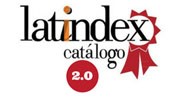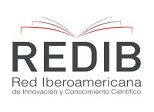Children's Visual Health From Primary Care. A Case Study in Teaching Optometry
DOI:
https://doi.org/10.69890/hallazgos21.v5i3.479Keywords:
Childhood: visual health; optometrist; teaching-learning process.Abstract
Childhood ophthalmological problems are a frequent reason for consultation in Primary Care and frequently go unnoticed in front of the professor, the optometrist and the nurse. Efforts to achieve its early detection will significantly improve the ability and visual development and even in many cases the school and social performance of children. The objective of this study is to present a case study in the Optometry career where health teams are integrated for the preservation of visual health in childhood from Primary Care and that at the same time reflects the importance of field work for the teaching of optometry. The methodological design had three facets: the first bibliographic, where a review of the literature was carried out in the databases, articles in both English and Spanish referring to the visual health of the child population were selected and the terms in reference were defined to ophthalmological problems; the second corresponds to the case study carried out in an educational institution located in Guayaquil and, finally, the third phase corresponds to a focus group where the students expressed their opinions regarding the teaching-learning process through the case studies. This research concludes that children's visual health is of significant importance that must be attended at the first level of care by the professionals who work in it, considering the incidence of pathologies in this age group; and that when students apply knowledge, the teaching-learning process is more effective.
References
Abra sus ojos. (2018). El Astigmatismo. (Internet). Recuperado de https://www.abrasusojos.com/astigmatismo/
Abra sus ojos. (2018). ¿Qué es la Miopía? (Interenet). Recuperado de https://www.abrasusojos.com/miopia/
American Academy of Ophthalmology. (2012). Oftalmología pediátrica y estrabismo. 2011-2012: Sección 6. España: Elsevier.
Castaño, E. (2013). Protocolo de agudeza visual en atención primaria: consulta de enfermería pediátrica. Universitario de oftalmobiologia aplicada universidad de valladolid. Recuperado de http://uvadoc.uva.es/handle/10324/6067
Clínica de Ojos Jujuy S.R.L. (2020). Defectos Refractivos. (Internet). Recuperado de https://clinicadeojosjujuy.com.ar/patologias/defectos-refractivos/
Colegio Optometristas-Ópticos Andalucía. (2018). La visión y el niño.[Internet].Recuperado de https://www.tuoptometrista.com/salud-visual-infantil/la-vision-y-el-nino/
Committee on practice and ambulatory medicine and section on ophthalmology. Use of photoscreening for children’s vision screening. Pediatrics 2002;109.
Correa, J; Gómez, J, & Posada, R. (2015). Fundamentos de pediatría Tomo V: Urgencias, neurología, oftalmología, otorrinolaringología, ortopedia. Fundamentos de pediatría Tomo V: Urgencias, neurología, oftalmología, otorrinolaringología, ortopedia. Corporación para investigaciones Biológicas (CIB).
Fandiño, A. (2017). La salud visual y su importancia para el desarrollo del niño y niña. [Internet]. Recuperado de https://portalgarrahan.org/la-salud-visual-en-la-infancia-y-su-importancia-para-el-desarrollo-del-nino-y-nina/
Fernández, M. (2008). Las 50 Principales Consultas en Pediatría de Atención Primaria. Editor Miguel Ángel Fernández-Cuesta Valcarce. Recuperado de https://www.aepap.org/biblioteca/libros/las-50-principales-consultas-en-pediatria-de-atencion-primaria
Furlan, W; García, J, & Muñoz, L. (2011). Fundamentos de optometría, 2a ed.: Refracción ocular. España: Universitat Valencia.
Kliegman, R., Stanton, M., Geme, J., & Schor, N. (2016). Tratado de pediatría. España: Elsevier.
La Rosa-Kindelán, D. (2018). La Arquitectura y Urbanismo en la Universidad Técnica de Angola, Luanda. Revista Maestro y Sociedad,15 (4).
Latorre, A., Bisetto, D., & Teruel, J. (2011). Trastornos y dificultades del desarrollo: Evaluación, intervención y casos prácticos. España: Universidad de Valencia.
López, M. (2004). Aspectos Evolutivos y Educativos de la Deficiencia Visual. La Coruña: Netbiblo. Recuperado de https://sid-inico.usal.es/documentacion/aspectos-evolutivos-y-educativos-de-la-deficiencia-visual-2/
Molina-Montoya, NP. (2019). Optometría: retos y oportunidades hacia futuro. Ciencia y Tecnología para la Salud Visual y Ocular,17 (1). DOI: https://doi.org/10.19052/sv.vol17.iss1.8
Navas-Montes, Y.; Pacheco, S.; Quintanilla, J.A.; Olivero, F. (2016). Formación de la cultura investigativa, responsabilidad social de las universidades ecuatorianas. Pacarina del Sur, año 8, (29, octubre-diciembre). Recuperado de www.pacarinadelsur.com/index.php?option=com_content&view=article&id=1389&catid=10
Optogestión. (2018). Ambliopía u ojo vago. (Internet). Recuperado de https://www.optogestion.com/ambliopia-u-ojo-vago/
Organización Panamericana de la Salud/ Organización Mundial de la Salud. (2013). Plan Estratégico Nacional de Salud Ocular y
Prevención de la Ceguera Evitable (2014-2021). Recuperado de https://www.paho.org/per/images/stories/FtPage/2013/PlanENSOPC-RD-6julio2013_1v.pdf?ua=1
Silva, S. (2010). Atención a la diversidad: Necesidades educativas: guía de actuación para docentes. Vigo: IdeasPropias. Recuperado de https://dialnet.unirioja.es/servlet/libro?codigo=250787
Tingley, D. (2007). Vision screening essentials: screening today for eye disorders in the pediatric. Pediatrics in review, 28 (54). DOI: 10.1542/pir.28-2-54
Vinces-Centeno, M., Peña-Consuegra, G., & Obando-Mendoza, L. (2019). La formación investigativa de los estudiantes de la carrera de Optometría de la Facultad de Ciencias de la Salud. Universidad Técnica de Manabí. Revista Polo del conocimiento, 4 (5), 157-175. DOI: 10.23857/pc.v4i5.970.
Wright, K. (2001). Oftalmología Pediátrica y Estrabismo. España: Elsevier.
Published
How to Cite
Issue
Section
License
Los artículos enviados a la Revista Científica Hallazgos21 deberán ser totalmente originales e inéditos.
Los autores son los responsables de los textos y las imágenes incluidas en los artículos y no necesariamente reflejan el pensamiento de la editorial o de la Pontificia Universidad Católica del Ecuador, Sede Esmeraldas (PUCESE).
Los autores disponen cederle a la Revista Científica Hallazgos21 todos los derechos inherentes para la edición, publicación y distribución o divulgación del mismo.
Se autoriza a las revistas firmantes de los acuerdos de Encuentros de Revistas Latinoamericanas para reproducir en parte o totalmente los artículos con la sola mención de la fuente claramente señalada.







